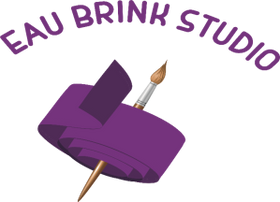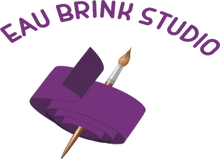Creative Recycling: Transforming Painted Wet Wipes and Rags into Textile Art
Introduction: As textile artists, we are always on the lookout for unique and sustainable materials to incorporate into our creations. In our quest to reduce plastic waste, we often turn to recycled plastics and eco-friendly fabrics. But have you ever considered repurposing everyday items like wet wipes and cleaning rags in your textile art? These seemingly mundane items can be transformed into beautiful pieces of mixed-media textile art, adding a new dimension to your creative journey.
The Plastic Predicament: Plastic usage reduction is a global concern, and we're all making efforts to minimize our plastic footprint. Manufacturers are striving to reduce plastic in their products, and recycling has become the norm for many households. However, plastics are still prevalent in various aspects of our daily lives. One unexpected source of recyclable plastic material might be hiding in your studio or kitchen: wet wipes and cleaning rags used for cleaning brushes and mopping up paints and dyes.
The Art of Recycling: Wet wipes are a prime example of how we can repurpose materials with plastic content for a second life in the realm of textile art. Once these wipes have served their initial cleaning purpose and are adorned with paints and dyes, they become a canvas of opportunity. Here are some creative ways to reuse them:
-
Bonding onto Other Substrates: The painted and dyed wet wipes can be bonded onto various substrates, adding texture and dimension to your artwork.
-
Stitching Into It: Sewing directly onto these wipes allows you to create intricate designs and patterns, turning them into captivating textile pieces.
-
Stitching Them Together: Combine multiple painted wet wipes to create a new fabric with a unique visual appeal. These stitched-together pieces can serve as the foundation for larger projects.
-
Quilting: Incorporate painted and dyed wet wipes into your quilting projects, giving your quilts an unconventional and artistic touch.
-
Mixed-Media Collage: Combine wet wipes with other textile materials, such as fabric scraps, threads, and beads, to create stunning mixed-media collages that tell a story.
Benefits of Using Wet Wipes in Textile Art:
- Sustainability: By reusing wet wipes and cleaning rags, you are diverting plastic waste from landfills and giving it a second life as art.
- Uniqueness: Each painted wet wipe tells a story of your creative process, making your artwork one-of-a-kind.
- Texture and Depth: The texture and absorbent nature of wet wipes can add depth and character to your textile art.
- Cost-Efficiency: Repurposing everyday items saves money on art supplies while sparking your imagination.
Conclusion: As textile artists, we have a unique opportunity to contribute to the reduction of plastic waste while expressing our creativity. Don't discard those painted and dyed wet wipes and rags used for cleaning brushes and mopping up paints and dyes. Instead, transform them into stunning textile art pieces that not only showcase your talent but also promote sustainability. Embrace the beauty of creative recycling, and let your imagination run wild with this unconventional medium. Your next masterpiece may be just a repurposed wet wipe away!







Leave a comment